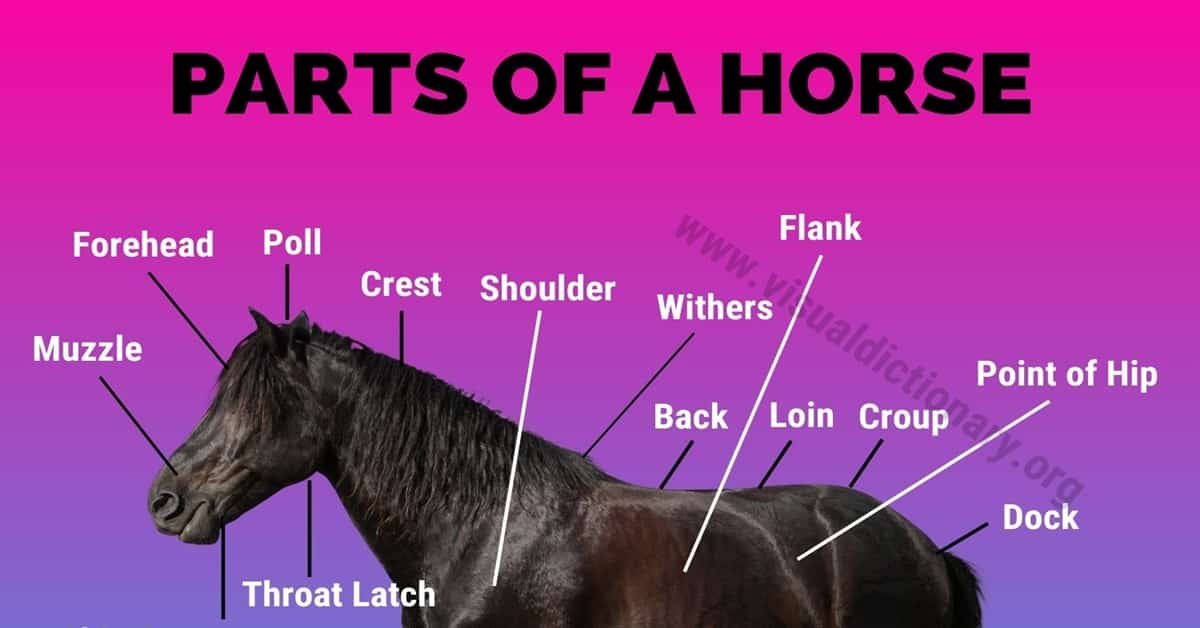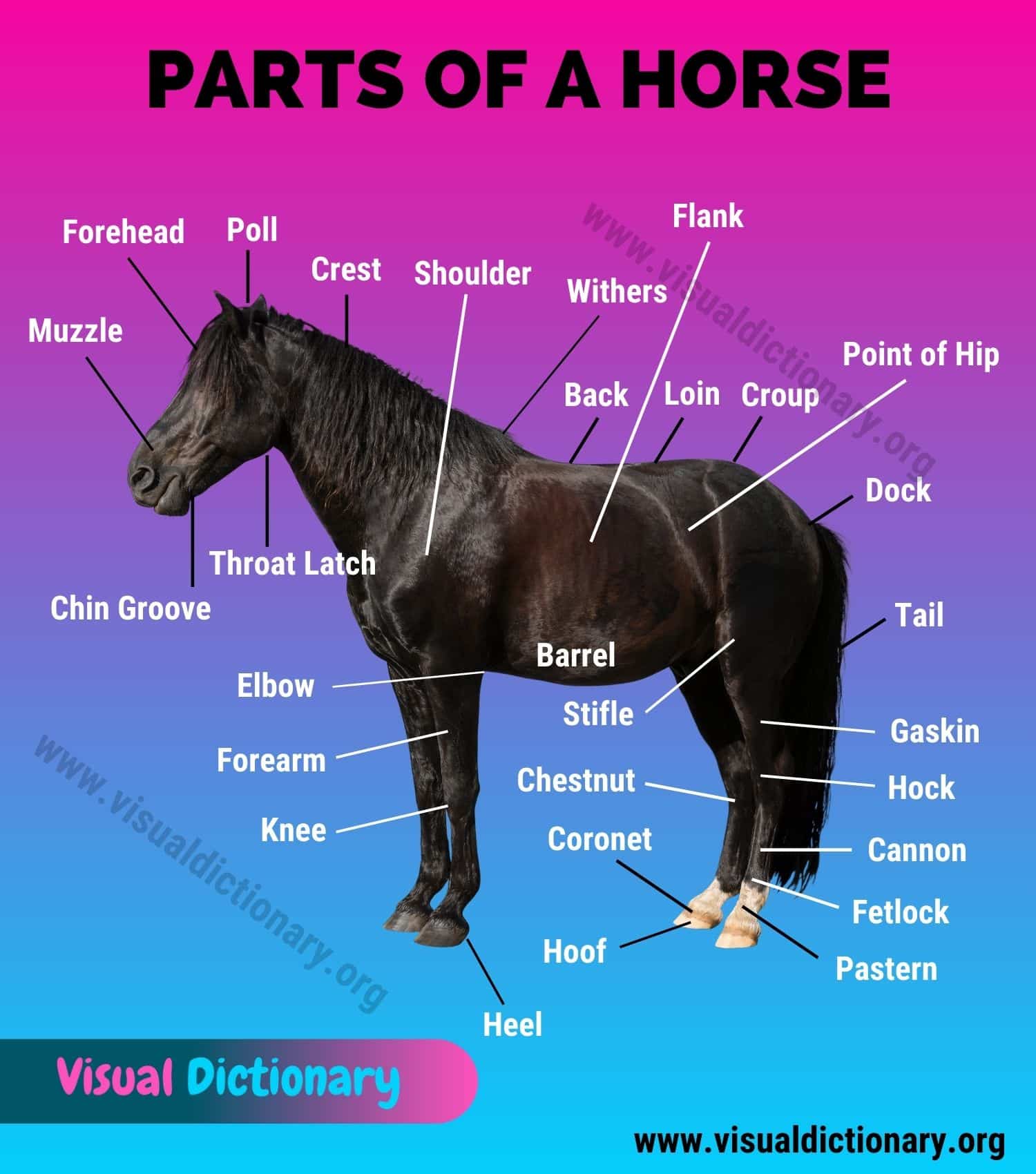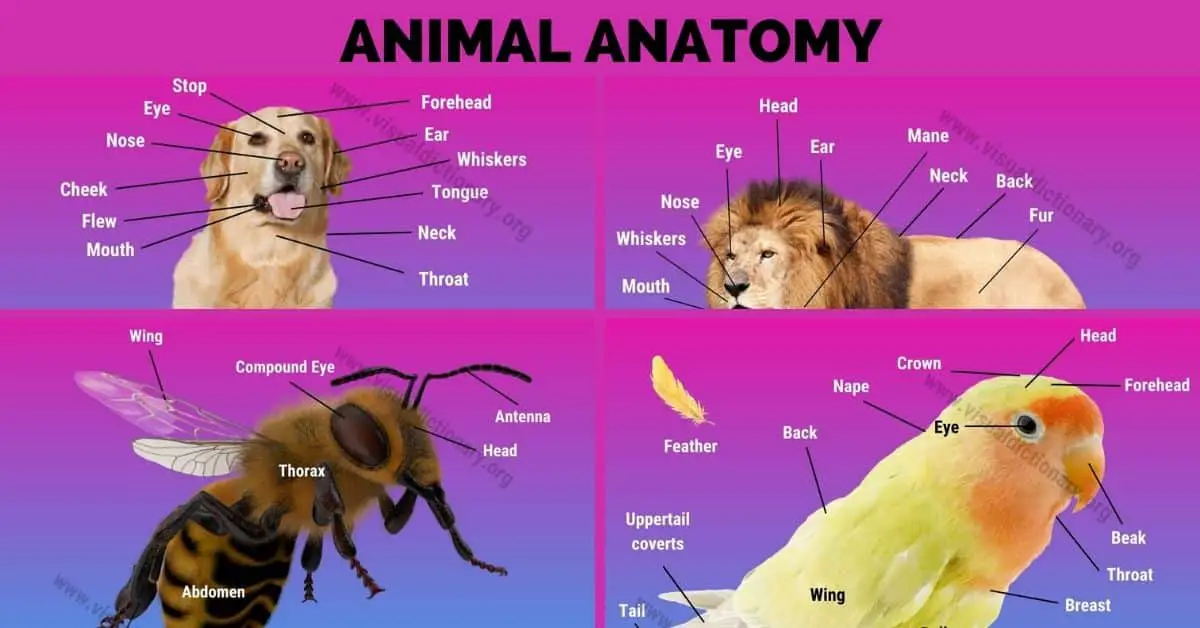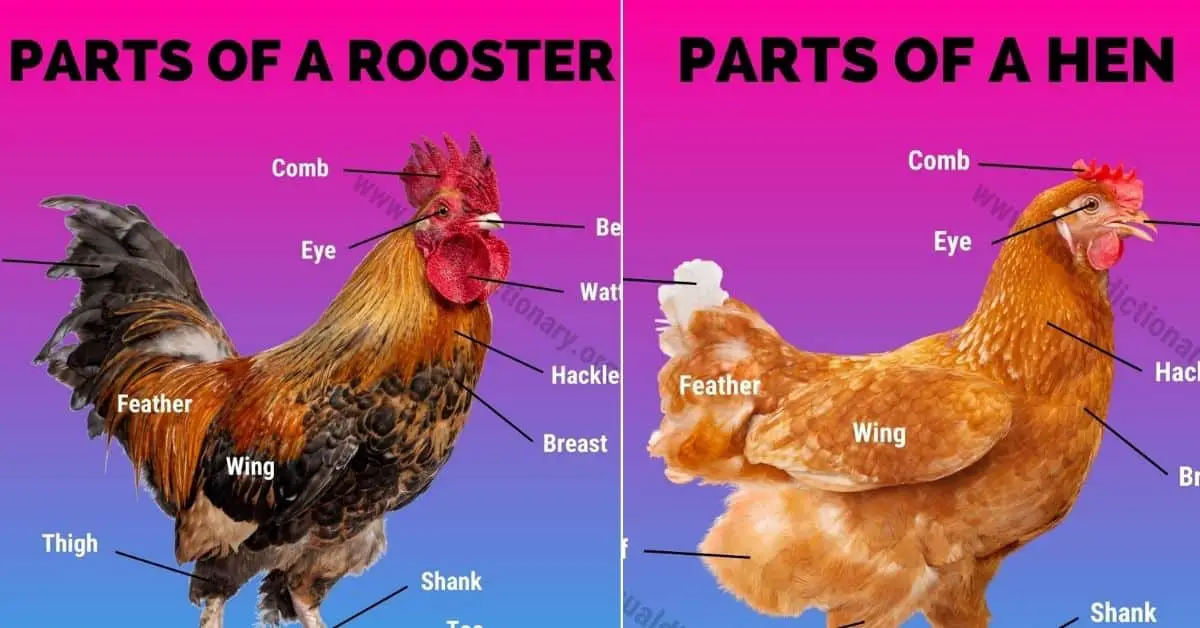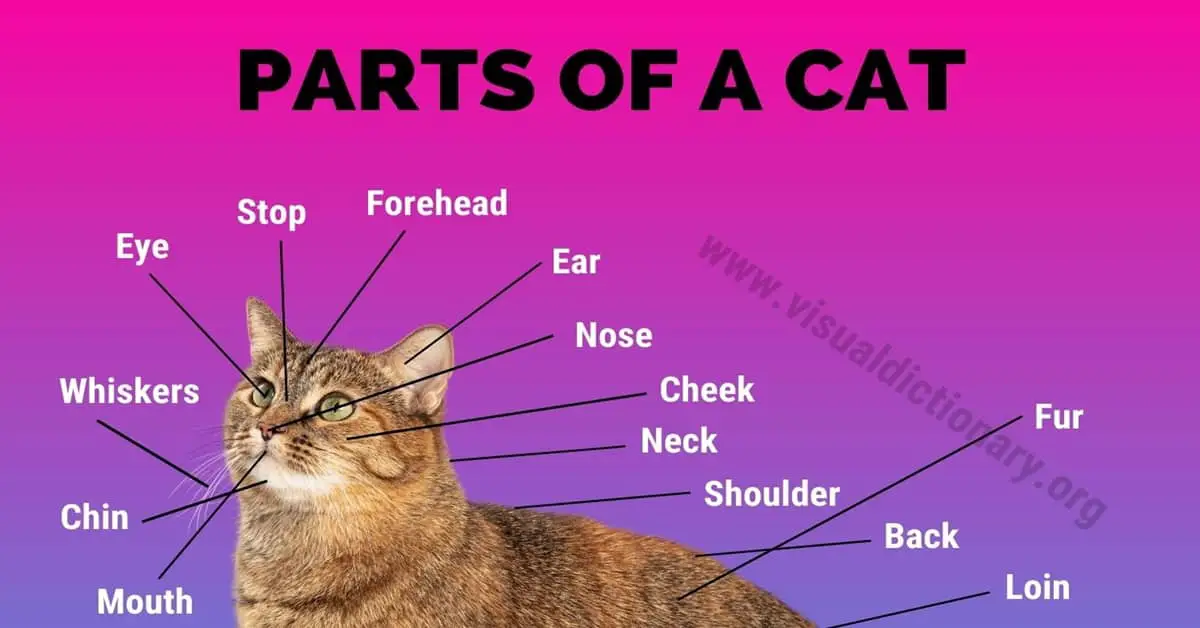Welcome to our article on horse anatomy! In this piece, we will be discussing the external parts of a horse, which are also known as points of the horse. These are the visible external features that make up the horse’s body, such as the neck, tail, and hooves. Understanding these parts is crucial for anyone who wants to work with horses, whether for riding, grooming, or general care.
Horse anatomy can be complex, but we will break it down for you in a way that is easy to understand. We will cover the basics, from the ears to the hooves, and provide diagrams and pictures to help you visualize each part. We will also discuss the importance of each part and how it contributes to the horse’s overall health and well-being. Whether you are a beginner or an experienced horse owner, this article is sure to provide valuable insights into the external anatomy of these magnificent animals. So, let’s get started!
Table of Contents
Horses
Horses are majestic and fascinating animals that have been domesticated for thousands of years. They are known for their speed, strength, and agility, and are often used for transportation, work, and leisure activities such as horseback riding and racing.
Horses come in many different breeds, each with their unique characteristics and physical features. Some of the most popular breeds include the Thoroughbred, Quarter Horse, Arabian, and Appaloosa.
In terms of external anatomy, horses have a variety of body parts that serve different purposes. These include the ears, eyes, nostrils, mouth, neck, withers, back, croup, tail, and legs. Each of these parts is essential for the horse’s survival and performance.
Horses are also social animals that thrive in herds. They communicate with each other through body language, vocalizations, and scent marking. Understanding their social behavior is crucial for anyone working with horses.
Horse Anatomy
Head
The horse’s head is a complex structure that contains many important features, including the eyes, ears, muzzle, and nostrils.
Eyes
The eyes are located on either side of the horse’s head and are used for vision. Horses have excellent vision and can see in almost all directions, except directly behind them. The eyes are protected by a bony socket and a third eyelid, which helps to keep the eye moist and free of debris. Horses also have a reflective layer behind their retina, called the tapetum lucidum, which helps to improve their night vision.
Ears
The ears of a horse are located on the top of their head and are used for hearing. Horses have excellent hearing and can hear sounds that are too quiet for humans to detect. The ears can swivel in any direction to help the horse locate the source of a sound. The base of the ear is made up of cartilage, while the outer part is covered in skin and hair.
Muzzle
The muzzle is the part of the horse’s head that includes the area of the mouth, nostrils, chin, lips, and front of the nose. The muzzle is very mobile and sensitive. Whiskers help the horse sense things close to its nose, and the skin is almost hairless. Beneath the skin is cartilage.
Nostrils
The nostrils are located on either side of the horse’s muzzle and are used for breathing. Horses are obligate nasal breathers, which means they must breathe through their nostrils and cannot breathe through their mouths. The nostrils are lined with delicate hairs and mucous membranes, which help to filter out dust and debris from the air before it enters the lungs.
Body
Neck
The neck is the portion of the horse’s body that is between the head and shoulders. It is made up of seven vertebrae and is responsible for supporting the head and allowing the horse to move it freely. The neck also plays an important role in balance and collection.
Back
The back of the horse is the portion of the body that runs from the base of the neck to the top of the tail. It is made up of 18 thoracic vertebrae and six lumbar vertebrae. The back is responsible for supporting the weight of the rider and the saddle, and it is also involved in the horse’s movement.
Flank
The flank is the area of the horse’s body that is located between the ribs and the hindquarters. It is an important area for grooming and checking for any signs of discomfort or pain. The flank is also an area where the horse’s vital organs are located, so it is important to be gentle when handling this area.
Tail
The tail is the long, flowing hair that grows from the base of the horse’s spine. It is made up of individual tail hairs that are attached to the tailbone. The tail is used by the horse for communication and balance, and it can also be an indicator of the horse’s mood.
Leg
A horse’s legs are designed for running and carrying weight, which makes them strong and complex.
Hooves
A horse’s hooves are made of keratin, which is the same material that makes up our fingernails. The hooves protect the sensitive structures inside the foot, such as bones, tendons, and ligaments. The hoof wall is the hard outer layer of the hoof that comes into contact with the ground. The sole is the softer, concave part of the hoof that supports the horse’s weight. The frog is the V-shaped structure in the center of the sole that helps absorb shock when the horse lands on its feet.
Pastern
The pastern is the area between the hoof and the fetlock joint. It consists of two bones, the long pastern bone and the short pastern bone, as well as several ligaments and tendons. The pastern acts as a shock absorber, helping to reduce the impact of the horse’s weight on its legs.
Fetlock
The fetlock is the joint between the pastern and the cannon bone. It is a hinge joint that allows the horse’s leg to bend and flex as it moves. The fetlock joint is supported by several ligaments and tendons, which help to stabilize the joint and prevent injury.
Cannon
The cannon bone is the long, slender bone that runs down the front of the horse’s leg. It is the largest bone in the horse’s leg and is responsible for supporting most of the horse’s weight. The cannon bone is surrounded by several tendons and ligaments, which help to support and stabilize the bone.
Coat and Markings
As equestrians, one of the first things we notice about a horse is its coat color and markings. Horse coat colors and markings vary widely and can be used to identify individual horses.
Coat Colors
Horses can come in a variety of coat colors, ranging from black, bay, chestnut, gray, palomino, and many more. The base coat color of a horse is determined by genetics and can be influenced by environmental factors such as sunlight and nutrition.
Coat Patterns
In addition to coat colors, horses can also have different coat patterns. Some of the most common coat patterns include solid, roan, appaloosa, and pinto. Solid horses have a uniform coat color, while roan horses have a mixture of white and colored hairs. Appaloosa horses have a distinctive spotted pattern, and pinto horses have large patches of white and another color.
Facial Markings
Facial markings are another way to identify individual horses. Common facial markings include a blaze, snip, star, and stripe. A blaze is a wide white stripe down the center of the horse’s face, while a snip is a small white marking on the nose. A star is a white marking on the forehead, and a stripe is a narrow white marking down the center of the face.
Leg Markings
Leg markings can also be used to identify individual horses. Common leg markings include socks, stockings, and coronets. Socks and stockings are white markings on the lower legs, while coronets are white markings around the top of the hoof.
Unique Anatomy Features
Teeth
One of the most unique features of a horse’s anatomy is their teeth. Horses have a set of 36 to 44 teeth, depending on their age. Their teeth are constantly growing, and they use them to grind and chew their food. Horses have a set of incisors at the front of their mouth, which they use to bite off grass and hay. They also have molars at the back of their mouth, which they use to grind their food.
Whorls
Another interesting feature of a horse’s anatomy is their whorls. Whorls are hair patterns that form a circular pattern on a horse’s body. They can be found on the forehead, neck, and other parts of the body. Some people believe that the location and shape of a horse’s whorls can indicate their personality or temperament.
Chestnuts and Ergots
Horses also have chestnuts and ergots, which are small, horny growths on their legs. Chestnuts are located on the inside of a horse’s leg, just above the knee or hock. Ergots are located on the back of a horse’s fetlock joint. These growths are thought to be remnants of the evolutionary process, and they serve no real purpose in modern horses.
Parts of A Horse | List
- Forehead
- Poll
- Crest
- Muzzle
- Chin Groove
- Throat Latch
- Elbow
- Forearm
- Knee
- Cannon
- Pastern
- Shoulder
- Withers
- Back
- Loin
- Flank
- Croup
- Point of Hip
- Dock
- Tail
- Gaskin
- Hock
- Fetlock
- Heel
- Ergot
- Barrel
- Stifle
- Chestnut
- Coronet
- Hoof
Frequently Asked Questions
What are the main external parts of a horse?
When it comes to the external anatomy of a horse, there are many parts to consider. Some of the main external parts of a horse include the neck, mane, tail, ears, eyes, nostrils, mouth, shoulders, forelimbs, hind limbs, and hooves. Each of these parts plays an important role in the horse’s overall health and well-being.
What is the purpose of a horse’s mane and tail?
The mane and tail of a horse serve several important functions. The mane helps to protect the horse’s neck from insects and other irritants, while also providing insulation in cold weather. The tail helps to swat away flies and other pests, and also serves as a balance and communication tool for the horse.
How many legs does a horse have?
Horses have four legs, just like most other mammals. Each leg is made up of several different parts, including the shoulder, forearm, knee, cannon bone, fetlock joint, pastern, and hoof.
What is the difference between the forelimbs and hind limbs of a horse?
The forelimbs and hind limbs of a horse have some key differences. For example, the forelimbs are typically shorter and more muscular than the hind limbs, which are longer and more slender. Additionally, the forelimbs are responsible for carrying more weight and providing more power, while the hind limbs are primarily used for propulsion and speed.
What is the function of a horse’s hooves?
The hooves of a horse serve several important functions. They help to support the horse’s weight and distribute it evenly, while also providing traction and shock absorption. Additionally, the hooves help to protect the sensitive inner structures of the foot from injury and infection.
What is the significance of a horse’s nostrils?
The nostrils of a horse are an important part of their respiratory system. They allow the horse to breathe in oxygen-rich air, while also filtering out dust, dirt, and other irritants. Horses are obligate nasal breathers, which means that they must breathe through their nostrils and cannot breathe through their mouths like humans can.
Related terms:
